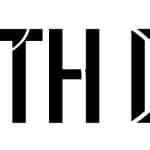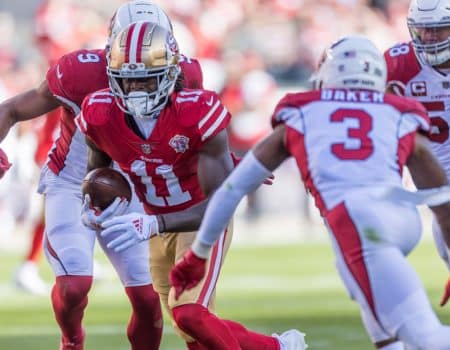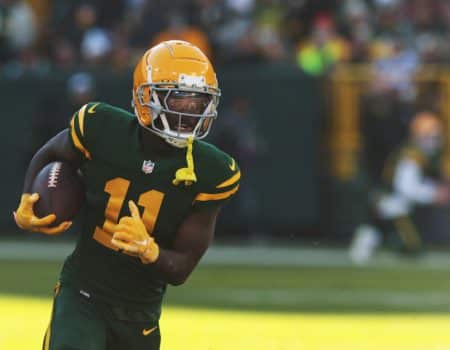Are you considering your first fantasy football auction draft this year? @mikesully58 has all the tips you need to make it a success.
If you haven’t participated in an auction draft in your fantasy football redraft leagues then your missing out on a whole new experience.
Auction drafts (especially live ones) bring a whole new element and require a different strategy than your typical snake draft. They also bring along a sense of unpredictability, and at times can be chaotic, but I have found them quite enjoyable to participate in.
Whether you’re a new auction drafter or a veteran, I’m here to offer up a little insight into how best prepare yourself for auction style drafts.
For those who may be new to auction drafts, we will break it down a bit. It pretty much functions exactly how it sounds.
Typically, everyone in the league has a starting amount of draft “cash” coming into the draft (i.e. 200 dollars). Once the draft begins, a player gets nominated and then team owners place bids on that player until one person is left, which means they get that player.
For example, Patrick Mahomes may get nominated for a dollar. You may want him so you go back and forth in bidding with a few other guys. Finally you place a bid and the last person you’re bidding against does not want that player for that price anymore so you now have Mahomes on your roster for 30 bucks. This means you have 170 dollars left to fill out the rest of your roster.

Auction drafting can be appealing to many people because essentially you can get whoever you want on your team. If you want Mahomes, Saquon Barkley and DeAndre Hopkins, you can have them. However, this means your depth past these guys may be in jeopardy as you have less money to fill out your roster and will most likely lose bids to others who have more money.
As with all fantasy drafts though, preparation is key. This is why I decided to write this article to help others prepare as best as possible for an upcoming auction draft. When referencing teams and league information I will be talking about a 12-team league with one quarterback, two running backs, two wide receivers, one tight end, team defense, kicker, and six bench spots. Also, we will be using 200 dollars as an auction budget, but this can be different from league to league.
Be aware of, but don’t live by, auction value
Just like in redraft formats and ADP, we have a tool in auction drafts to identify a player’s potential range or draft cost, which is Average Auction Value (AAV).
To summarize AAV, this is an estimated dollar amount of how much a player might possibly go for in an auction league. For instance, in a 12-team PPR league (with 200 dollar budget) Barkley might have an AAV of 65 dollars. However, just like with ADP, this does not guarantee that player will go for exactly that price (or in that round with ADP). In one league the player can go for more while in another league the player can go for less.
What auction value does, just like ADP, is allow us to get an idea of what type of range we may be working with for certain players. Treat auction values more as a guideline rather than a rule so you don’t handicap yourself by not bidding on a player who might go a little higher than you were expecting.
I can admit, I’ve been held back by AAV, as it has gotten in the way of getting guys I wanted for a few more dollars than AAV. Use it as a guide and feel free to adapt as the draft unfolds.
Prepare your budget wisely
Just like with other fantasy draft format, it’s good to come prepared on draft day. We’ve already touched on auction value, but there are other ways to be as prepared as possible as auction drafts bring a lot more nuances.
This is where a good cheat sheet or draft board comes into play. Some people even take it to the next level and create a “budget”, which is a pre-set amount that you want to spend at each position. In a 200 dollar budget league this might look like:
| QB | 7 |
| RB1 | 55 |
| RB2 | 40 |
| WR1 | 40 |
| WR2 | 30 |
| TE | 10 |
| Flex | 10 |
| Kicker | 1 |
| DEF | 1 |
| Bench | 1 |
| Bench | 1 |
| Bench | 1 |
| Bench | 1 |
| Bench | 1 |
| Bench | 1 |
| Total | 200 |
Now, if you decide to go with a budget, make sure you’re remembering our previous tip of not living directly by AAV. Don’t let a budget get in the way of you getting the RB1 you want simply because he was a few dollars over your budget.
This is where being flexible can come in handy (which we will touch on later), and if you need to adjust your budget in real time, then that is the best way to go. There are other ways to develop strong cheat sheets without a budget, but it depends on your personal preference and finding what fits best for you.
Tier your players
Another way to best be prepared is to develop tiers for your players and develop a cheat sheet off of this. There are a lot of cheat sheets with tiers available online, but I prefer to develop my own. Simply put, tiers are established at each position and separate players by where you perceive they rank amongst other players.
There are several ways to tier your players. One example is to create tier rankings for each position. If I were to tier my running backs I might use personal preference and create tiers as to who I feel like might be my RB1, RB2, RB3/Flex, etc… This helps you focus in on the position and gives you an idea of who you might want to grab.
You can also tier players by skill set as well where you might have Barkley, Ezekiel Elliott, Christian McCaffrey and Alvin Kamara as your “tier one” running backs. Then you might create tier groups as you work down the position. This helps create groups of players who you might see as “equal” and can focus on groups of players instead of single players.

What this also does is allows you to pay attention to pricing within each tier. For example, let’s say Barkley, McCaffrey and Kamara all have been already drafted for 65 – 75 dollars. It gives you a possible idea on how much Elliott may go for to allow you to be best prepared.
Keep track of your spending
As you might expect, keeping track of your auction dollars is very important. If it is an online draft, typically the website will do this. Where it gets tricky is when it is an in-person draft. One way I have kept track of my money in the past is utilizing what I deemed a “count” when I have created a budget for my auction drafts.
If we use the budget from above, let’s say my first player acquired is my RB1 for 60 dollars when I originally budgeted for 55 dollars. This begins my “count”, which starts at negative five dollars. This reflects that I spent five more dollars than I had planned on my RB1 and have five less dollars for my other positions.
Now, let’s say I grab my next player, another running back, with some great value and pick up my RB2 for 30 dollars. This is ten dollars less than what I had budgeted for, so now I take the negative five (my count) and add ten (money saved on RB2), which gives me a positive five count now. Now I know I have five extra dollars to spend on the remaining positions that need filled. You would continue to do this after each player you acquire and it allows you to keep one simple number handy to tell you if you have extra dollars to spend.
That is just one way to keep track of your money, but the point is to make sure you’re aware of how much you’re spending. It comes with an advantage to know if you have extra cash or if you need to look for value somewhere. Being aware of this let’s you be flexible and doesn’t let a budget or auction values hold you back from grabbing the best team possible.
Be flexible
Nothing is more important than being flexible in an auction draft, as the format can, at times, be wildly unpredictable and even chaotic. You can spend hours researching auction values and getting an idea of what type of team you may be able to get, but then enter the draft and notice things are completely different than what you prepared for.
For instance, let’s say the top six running backs have an auction value of 50-65 dollars. Now, you may have prepared for this price range, but when you enter the draft you notice guys are going for 60-75. This is where flexibility can come in handy, as you can adapt as quickly as possible to avoid letting the draft dynamics impact your ability to select a solid team.
For our example above, we might be able to pivot off of the run on running backs and go swoop up a high-level WR1 for a value. Or, we may be able to remain calm and know that since these guys are “overspending” on the top backs, we can sit back and get our value later on. This may look like a Chubb/Jones/Carson (current combined AV of 65 dollars) combo at running back versus just Barkley (current AV of 65 dollars) and a low end RB2/3 type player.
Deception is key
As we discussed, usually every team manager gets a chance to nominate players who people are going to be bidding on. But there are many approaches to nominating players.
We can nominate players we don’t like. Or, you can nominate players you do want. However you decide to go about it, I often find it most beneficial to nominate players that I don’t want when starting out.
I enter an auction draft with a strategy to try and get other teams to spend more money on a player or position than they probably should and this is why I often nominate players or positions that I don’t want early on.
For instance, I might toss out a kicker, IDP, or defense (if you play with these positions). If I can get someone to bid more than one dollar on one of these positions, that is simply one less dollar they have to spend elsewhere. I have been in leagues where team defenses have gone for ten or more dollars, which works out in your favor as you can typically get a strong defense or stream defenses and save nine dollars to use elsewhere.
Also, you can do this with certain players that you want nothing to do with. You can nominate a player like Mahomes and watch as others toss their cash around to grab him. It is also helpful to mix it up later, so if you have been tossing out guys you don’t want to start then throw out a few guys you do like in the mid or later part of the draft to see if you can get some value.

Start small
When placing bids, it’s always best to bid the smallest amount. I will always place a player up for nomination at the lowest bid possible, typically around a dollar.
The same is true when you’re in a bidding war with another league member. Don’t raise the bid by five dollars when you can bid it up by one. If you raise the bid up you may be costing yourself money as you might have won the player for three dollars more, but you spent five more. This might draw some flack from other members of the league at times, but we’re here to get the best value, not make new friends.
Stay focused and calm
This one is simple: stay focused on your plan. Don’t let other members of the league impact your bidding or place you on “tilt”. Just because other teams are throwing their money around and the top players are flying off the board doesn’t mean you should join the trend.
Like I talked about earlier, there may be times where a certain position starts flying off the board. This is a great time to explore other positions in the draft, as everyone seems to be focusing on the position that is getting all the attention.
We have to avoid the tendency to follow suit with everyone else, because the initial reaction to seeing a certain position fly off the board is to not be left behind, but this might actually end up hurting you more than helping you as you might be overspending.
Again, if the top running backs begin going and we’re noticing it’s for more than the AV, we can then pivot to a different position. This might be a time to toss out a quarterback, tight end, or receiver to see if you can’t get a guy for some value.
Focus on your starters
Now, there is some merit to taking a value based approach to an auction draft, but I feel like the majority of your cash should be focused on your starting lineup. You want to try and get as many players as you can who are going to be reliable for you on your team week in and week out. It’s much easier to spend more on your starters rather than saving and getting a deeper bench, as you then have to decipher who you’re going to play each week.
I often tend to take bench players with high-upside who cost little. Essentially, you have a shot at these high-upside guys blowing up and becoming a major asset. If not, it is easy to pivot away from these players once waiver wire hits.
Avoid overspending on kickers, defenses, and IDPs
My rule of thumb is to never spend more than one dollar on these three positions. It may be tempting to say something along the lines of “what’s two more dollars for the top defense?” But these two dollars can significantly impact other picks. Two dollars may be the difference between winning and losing out on another player that you could have gotten in the draft that probably would have helped your team more than that top defense.
Now, a few exceptions apply here, like if you play in an IDP league that has inflated scoring for IDP players. Then you may want to explore the benefits of a strong IDP (see knowing your league settings). Or, if it’s your last pick and your roster is already full, then it might be okay to spend the extra money on the defense.
Don’t leave money on the table
Whatever your budget is, make sure you don’t leave any money on the table. Nothing hurts more than finishing the draft and realizing you have 10-15 dollars of auction money left. You want to allocate all your funds to make the best team possible and leave nothing behind.
Know you league settings and opponents
This is one that is important across all formats, but especially so in auction drafting. Like we said before, many leagues may be auction format for the draft yet have their own intricacies for how players earn points. Simply because you have done an auction draft before doesn’t mean you should look past the rules.
It is also just as important to know who you are in the league with. For instance, my home league is an auction draft format with my friends from high school. This allows me to get to know their tendencies, as we have spent countless hours drafting against each other.
I know every manager in this league is going to go after an RB1 early and is willing to pay for them. This means the top 12 running backs often go for 50 dollars or more, whereas some of them might have lower AV. This lets me prepare for this and be as prepared as possible on draft day. It doesn’t take a whole lot of extra time, but can provide significant return if you’ve got a good grasp on the league nuances.






No Comment! Be the first one.